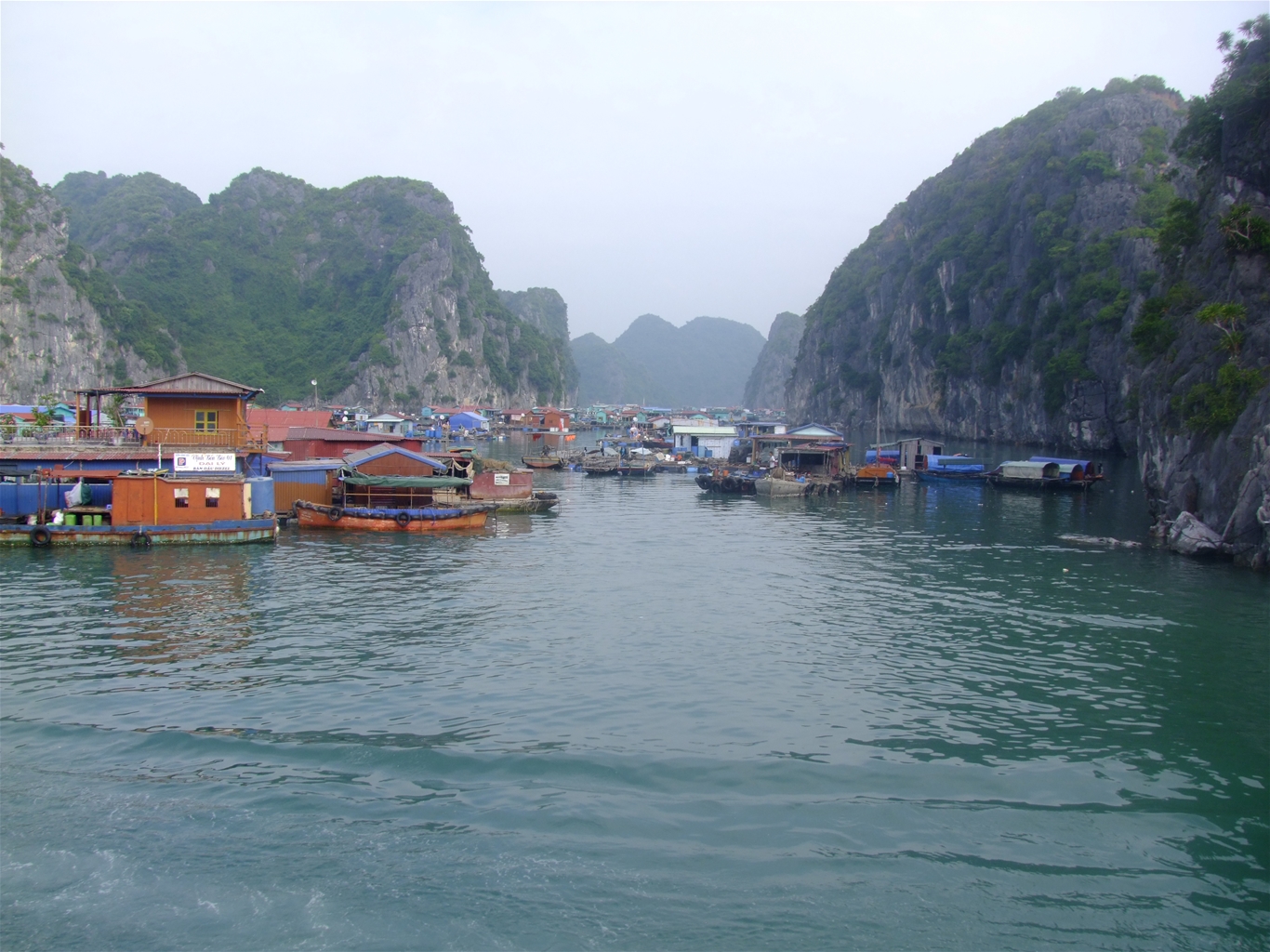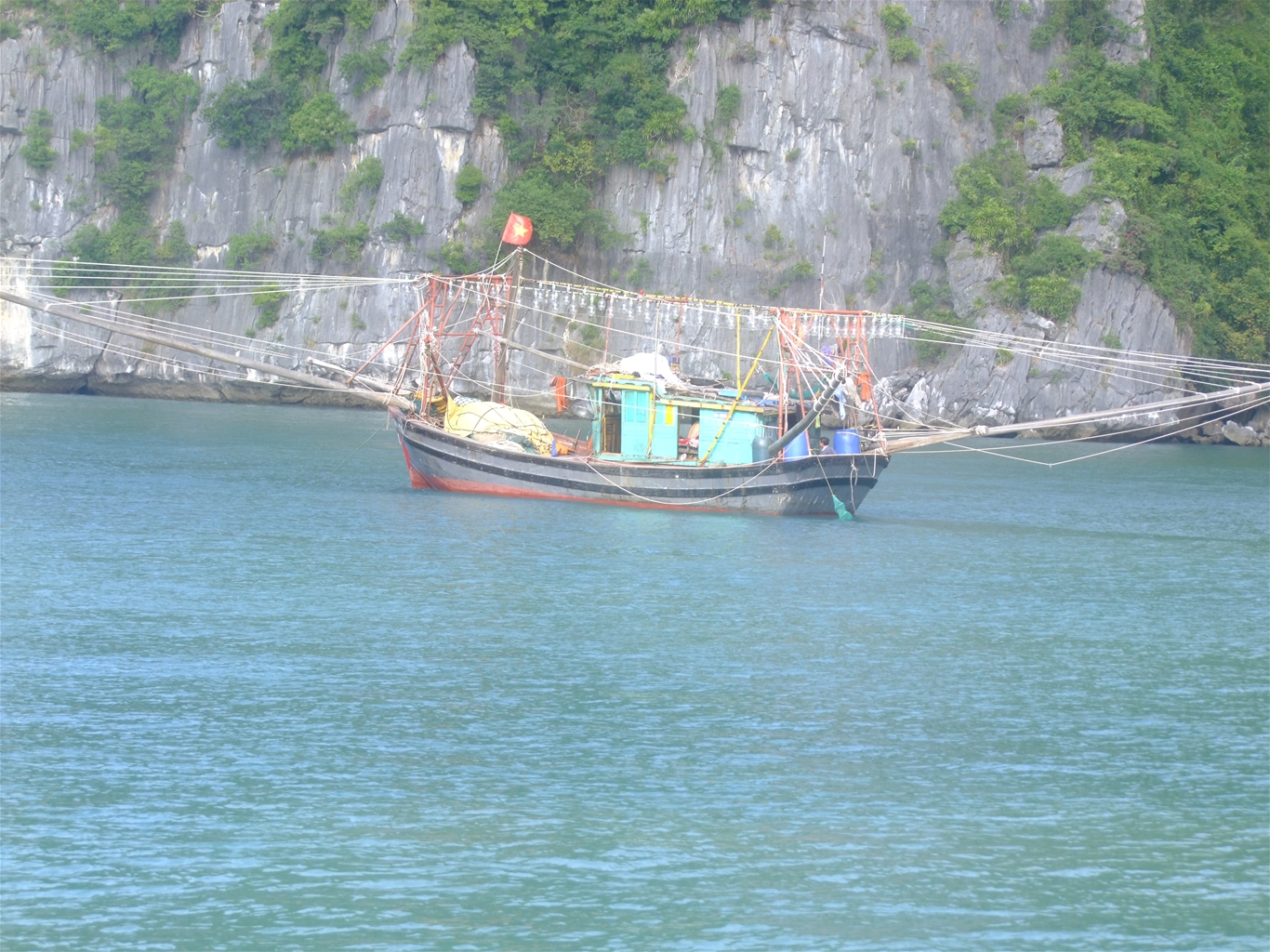Ben Beo or Cai Beo floating fishing village is located approximately 1.5 km from the center of the town. This is a flat valley with three of its sides being limestone islands. Ang Carpet and Bu Nau, are located 200m from the village, which are sheltered, quiet and scenic. This is very convenient for living and fishing.
The natural beauty and favorable terrain, rich in animal products have helped Cai Beo’s ancient inhabitants live here for many years, creating distinctive culture.
Historically, there have been four archaeological excavations carried out around this area. The first time in 1938, by the French archaeologist Max Colani who discovered Cai Beo as a home of ancient Vietnamese culture. Based on this information, the Institute of Archaeology conducted surveillance and discovered the beginning of the sea culture.
In 1981, the Vietnam History Museum excavated an area of 78m2, where archaeologists found many stone artifacts in two successive stages of development. These were identified as Pre-Ha Long and Ha Long.
In 1986, the third excavation commenced and archaeologists discovered almost 180 stone tools including basic and grinding tools made by hand, 9 fragile ceramic pieces and 6 animal bones.
On 5th December 2006 the final excavation was carried out, revealing 10 tombs, 137 stone artifacts and 1424 pieces of pottery shards. Analysis showed that all of the artifacts collected were made from granite, ceramic, twisted rope, crude stamping, fish bones, shells and sea oysters.
The evidence from these finds has determined Cai Beo as a site of archaeological significance. The Neolithic period characterized by the Cai Beo archaeological finds suggests a difference to the Ha Long culture.
Cai Beo is recognized as one of the most precious relics of the Northern Coastal area. This is an ancient fishing village with the largest scale known in Viet Nam.
The development of tourism and new policies given by the government have brought a new breath to the people living around the village. Nowadays, people earned their living mainly in three areas: catching fish, seafood farming and doing business on tourism. There are more than 300 fishing families living around here with around 1000 residents, of which 300 are children. And the children living around here are much more lucky than other children living in another floating fishing villages in Vietnam because they have a good chance to go to the island to get an education. They go to school by a water taxi and back home by the same one late in the afternoon.
.JPG)

.jpg)

catbavision-your best friend on the island